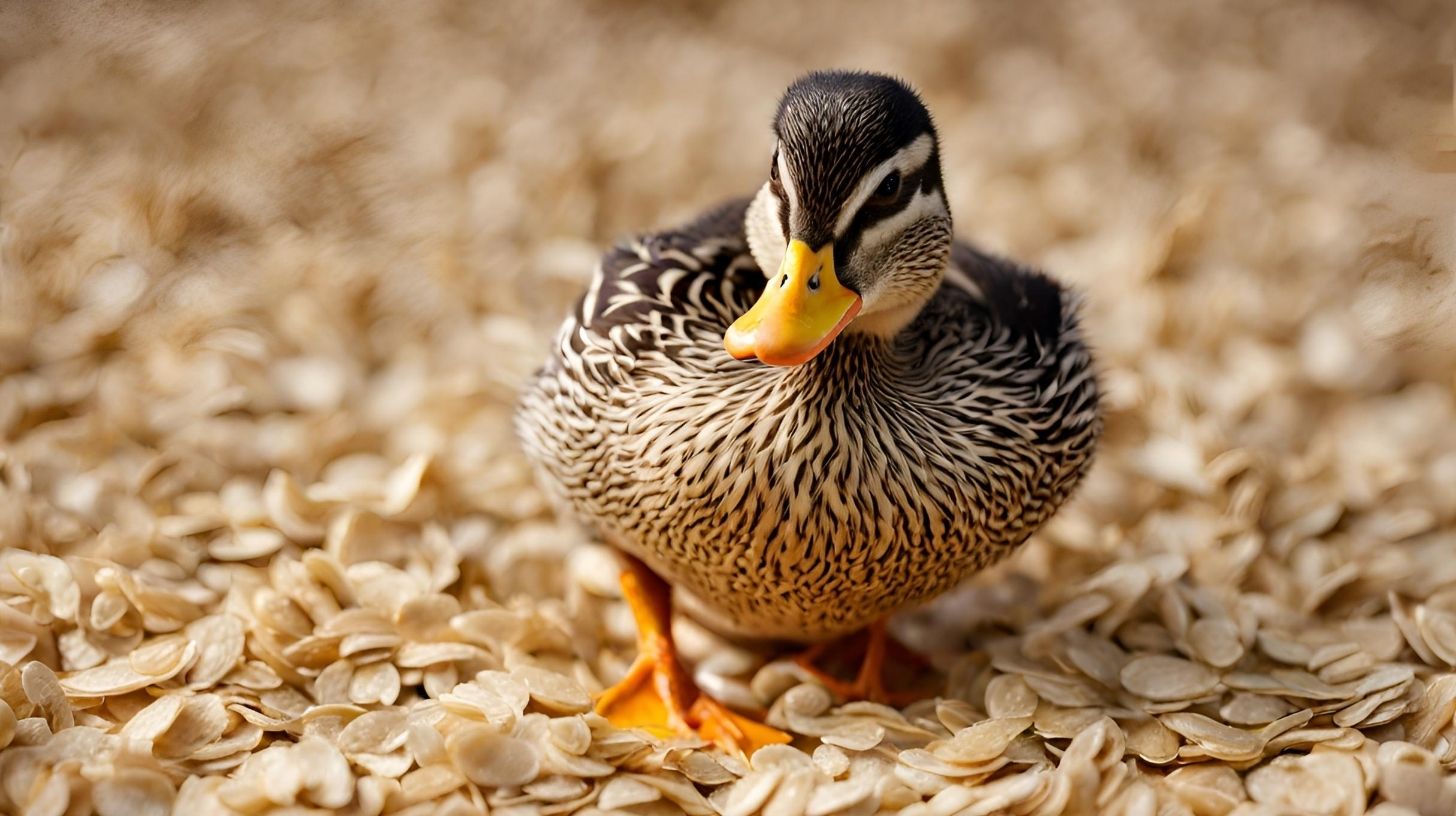What Do You Call A Crate Of Mallard Ducks?

Table of content:
Ducks are a popular type of poultry raised on farms and homesteads around the world. Mallard ducks in particular are a common domestic duck breed. These web-footed birds are known for their beautiful green heads and recognizable “quack” vocalizations.
When raising mallard ducks, it’s common practice to transport and house the ducks in crates. But what exactly do you call a crate full of mallard ducks? Is there a special name for a group of crated ducks? Let’s take a closer look at mallard duck crates and terminology.
How Many Ducks in a Mallard Duck Crate?
To determine if there’s a standard special name for crated mallard ducks, we first need to look at how many ducks are typically kept in a single crate.
The number of mallard ducks that can be safely and comfortably transported in a single crate depends on the:
- Size of the crate: Larger crates can accommodate more ducks. But the crate must be big enough for all ducks to sit, stand, and turn around.
- Age of the ducks: Younger ducklings require more space per duck than adult ducks.
- Duration of transport: Longer transport times mean fewer ducks per crate.
According to agricultural guidelines, these are the recommended stocking densities for mallard ducks in transport crates:
- Day old mallard ducklings: 25 ducklings per square foot
- 2-7 day old mallard ducklings: 15-20 ducklings per square foot
- Adult mallard ducks: 3-5 adult ducks per square foot
So for a standard 48-inch crate:
- Day old mallard ducklings: Around 60 ducklings
- Juvenile mallards 2-7 days old: 36-48 ducklings
- Adult mallard ducks: 6-10 ducks
Mortality rates markedly increase if more ducks are crammed into a standard crate. Following the recommended densities allows for humane, low-stress duck transport.
Typical Number of Mallards in a Crate
Based on the stocking density guidelines, we can determine the typical number of mallard ducks kept in a common sized crate:
For adult mallard ducks, the typical number kept in a single standard 48-inch crate is 8-10 ducks. Eight to ten mature ducks allows each individual adequate room to move and behave normally during transport.
Raising healthy ducks necessitates adhering to humane stocking densities. Stuffing extra ducks into crates risks overcrowding injuries and stress.
Specialized Terminology for Mallard Duck Crates
So now we know that the standard crate of adult mallards contains about 8-10 ducks. Is there a specific shorthand name that duck experts use for a “crate of 8-10 mallards?”
In the duck raising industry, a crate containing 8-10 adult mallards is referred to as a “gang.”
A gang of mallards is the specialized terminology for a crate housing the optimal number of mature mallard ducks. This shorthand helps duck farmers communicate concisely.
Other examples of industry terminology include:
- A “brace” of mallards for 2 ducks
- A “flock” of mallards for 15 or more ducks
- A “paddling” of mallard ducklings
But a gang remains the standard term for a typical number of adult mallards being transported in a normal sized crate.
Do Mallards Like Being Crated?
Transporting and housing ducks in crates is a practical necessity for most duck owners. But do mallards actually like spending time in crates?
Mallard ducks tolerate crates well when basic welfare standards are met. Ducks are social animals that can be stressed by crowding, isolation, and unfamiliar environments. Paying attention to these factors helps minimize discomfort:
Proper Stocking Density
Avoid overcrowding crates to allow ducks adequate space. Follow the density guidelines to reduce injuries, fighting, and mortality.
Time Limitations
Limit transport times and temporary housing periods in crates to reduce stress. Ducks should be in crates only when necessary.
Social Groups
House mallards with familiar flockmates rather than random ducks when crating. The presence of social companions provides comfort.
Bedding Material
Line crates with absorbent bedding to soak up messes and prevent slippery, sore feet. Sand or wood shavings are suitable options.
Ventilation
Ensure crates allow fresh air flow. Ducks overheat easily and require good ventilation, especially during transport.
When housing standards are met, mallards tolerate crates reasonably well for transport and temporary containment purposes. But their natural preference is for open ponds and fields.
Optimal Crate Size for Transporting Mallards
The typical crate size used for transporting mallard ducks is 48 inches long by 30 inches wide by 16 inches high. These are the ideal internal dimensions for a gang of 8-10 adult mallards.
Crates much smaller than this don’t provide adequate space, while much larger crates become heavy and unwieldy for handlers to maneuver.
48 x 30 x 16 inches:
- Allows each adult duck 16-24 inches of floor space
- Provides sufficient height for ducks to sit upright
- Enables ducks to turn around and lie down
- Is sized for easy stacking and transport
- Weighs a reasonable amount when loaded with ducks
Proper ventilation is also critical. Opt for crates with open slatted sides rather than solid walls. The slotted sides promote air flow while still securely containing the ducks.
For younger ducklings up to 4 weeks old, add dividers in the 48 inch crate to create a more appropriately sized enclosure for the smaller birds.
Weight of a Crate of Mallards
A standard 48 inch crate when filled with 8-10 adult mallard ducks can weigh 45-65 pounds.
The actual weight varies based on:
- Number of ducks – 10 ducks will make a heavier crate than 8 ducks.
- Duck size – Larger, meat producing ducks weigh more than smaller ducks. An average adult mallard weighs 3-5 pounds.
- Crate material – Plastic crates are lighter than wooden crates.
- Bedding – Sand or shavings add weight versus an empty crate.
- Water – Hydrated ducks with water in the crate also increase the weight.
- Travel time – Longer transport means more water and mess.
For shorter travel under an hour, aim for 8 ducks and minimal bedding to reduce crate weight. Longer hauls over multiple hours will require more on-board provisions that add weight.
Handling Heavy Crates
To avoid back strain when moving heavy duck crates:
- Use wheeled carts to transport crates over longer distances
- Load crates at waist height to avoid bending and lifting
- Push crates rather than pulling to reduce neck strain
- Hold crates close to the body when carrying
- Team lift heavy crates with a second person
Proper handling technique keeps duck handlers injury free when moving weighed down crates around the farm or homestead.
Are Crated Mallards Stressed During Transport?
Transporting ducks in crates is unavoidable in most farm and domestic duck operations. But can this process prove stressful on the ducks?
Like all animals, ducks can become stressed by transport. However, several management practices reduce anxiety and distress:
Gradual Introduction
Allow ducks to become accustomed to crates before transport. Place crates in their housing, add treats inside, and train them to enter voluntarily.
Familiar Groups
Don’t crate random ducks together. Keep family groups and flocks together for comfort.
Minimizing Noise
Avoid shouting or sudden loud noises when moving ducks into crates and throughout transit.
Gentle Handling
Move ducks calmly without rushing or chasing. Herd them patiently into crates.
Ventilation & Shade
Park transport vehicles in shady spots and angle crates to get cross ventilation during rest breaks.
Short Trips
For young ducklings, limit travel to under 2 hours with hourly stops to check for dehydration or heat stress.
Careful Driving
Go slowly over bumps and turns without sudden stops or acceleration changes.
Following duck welfare best practices keeps crated mallards as comfortable and stress-free as possible during transport between locations.
Final Thoughts
Crates are a common way for duck owners to transport and house mallard ducks. The standard terminology for a crate holding the optimal number of 8-10 mature mallards is a “gang.”
Gang crating requires paying attention to stocking density, crate size, transport duration, physical handling, and other welfare factors. When basic duck needs are met, mallards tolerate temporary crating reasonably well as part of farm and domestic duck management. Following the recommendations covered here allows duck owners to move crated mallards in a safe and low-stress manner.
Welcome. I’m Adreena Shanum, the proud owner of this website, and I am incredibly passionate about animals, especially poultry. I founded adreenapets.com as a labor of love, stemming from my desire to share my knowledge and experiences with poultry enthusiasts worldwide.




